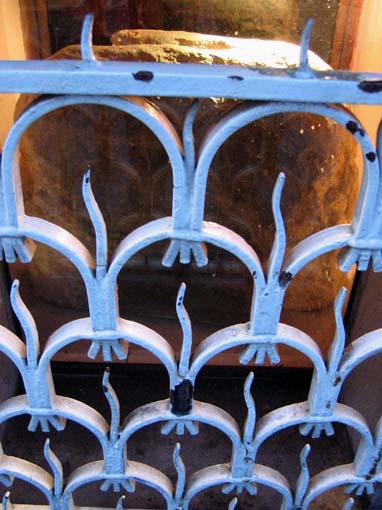
As seen on 10 April 2007 CE.

As seen on 10 April 2007 CE.

As seen on 10 April 2007 CE.

Rock gardens don’t get much better than this. The Chestnuts as seen on 29 October 2006 CE.

As seen on 29 October 2006 CE.

As seen on 29 October 2006 CE.

As seen on 29 October 2006 CE.

As seen on 29 October 2006 CE.

The King Stone (and Jerome).
As seen on 28 August 2006 CE.

As seen on 23 August 2006 CE.

As seen on 23 August 2006 CE.

As seen on 23 August 2006 CE.

As seen on 23 August 2006 CE.

The Rollright Circle featuring one of it’s entrances. As seen on 23 August 2006 CE.

As seen on 21 August 2006 CE.

The Longstone featuring it’s shorter companion stone which has since become part of the farmer’s wall. As seen on 21 August 2006 CE.

As seen on 23 August 2006 CE.

The Longbarrow is seen covered in bushes, etc, behind the stone.
As seen on 23 August 2006 CE.

The Longbarrow is seen covered in bushes, etc, behind the stone.
As seen on 23 August 2006 CE.

The origin of the name of Churchill is unknown but some think it may come from the Old English word “cyrc” which means a hill, a burial ground, or a barrow. Ie: Cyrchill.
These stones are quite possibly the remains of a stone circle from the neighbouring village of Sarsden whose name also sounds like Sarsen. Coincidence? Who knows?
As seen on 23 August 2006 CE.

The origin of the name of Churchill is unknown but some think it may come from the Old English word “cyrc” which means a hill, a burial ground, or a barrow. Ie: Cyrchill.
These stones are quite possibly the remains of a stone circle from the neighbouring village of Sarsden whose name also sounds like Sarsen. Coincidence? Who knows?
As seen on 23 August 2006 CE.

As seen on 21 August 2006 CE.

As seen on 20 August 2006 CE.

As seen on 20 August 2006 CE.

This picture shows the Whittlestone situated near the foot of the hill that houses the church where the stone used to lay. Perhaps, in their quest to destory pagan sites and relics, the church builders just rolled the stone down the hill and this is where it settled. Who knows? As seen on 23 August 2006 CE.

The raised remains of Condicote Henge is more pronounced on the north side as (I hope) this picture demostrates through the bushes. As seen on 25 August 2006 CE.

It is difficult to photograph this henge as much of it has been ploughed-out over the years. In this photo the right hand side of the grass is part of the raised henge arching round towards the left of the picture. As seen on 25 August 2006 CE.

As seen on 23 August 2006 CE.

As seen on 23 August 2006 CE.

Chastleton Barrow Fort as seen from within on 22 August 2006 CE.

The ramparts of the Chastleton Barrow Fort used to be faced with stone and this is sure to be a fallen example of one of them. As seen on 22 August 2006 CE.

As seen on 22 August 2006 CE.

As seen on 21 August 2006 CE.

As seen on 21 August 2006 CE.

As seen on 21 August 2006 CE.

As seen on 21 August 2006 CE.

As seen on 21 August 2006 CE.

As seen on 21 August 2006 CE.

As seen on 5 August 2006 CE.

As seen on 5 August 2006 CE.

Is it or isn’t it prehistoric? I’d like to think it is but it is frustrating that so much of the past is lost to us. At least we know the stone has survived 2000 years when you consider how much of the past has literally been lost through fire, bombs and redevelopment. And I’m glad it has survived because, as a Londoner, the saying is “So long as the stone of Brutus is safe, so long shall London flourish”. My grandad was a great walker and explorer of London and I remember him telling me about this. What took me so long to go and seek it out for myself? Viva!
As seen on 3 June 2006 CE

I was struck by how the protective iron work in front of the London Stone made it look like Cernunos, the horned God.
Between the two ‘horns’ you can see a gash in the stone. Is this where Jack Cade struck the stone to declare himself Lord Mayor of London during his rebellion against HenryVI in 1450? Who knows? I’m seeing Henry VI part 2 in Stratford later in the year and like the idea of seeing a prehistoric stone in a Shakespeare play (if it is indeed prehistoric). Some say there was a stone circle on Ludgate Hill, which is just up the road with St Pauls sitting on top of it, and that this stone may be from that. Will we ever know?
As seen on 3 June 2006 CE

12 April 2006 CE

12 April 2006 CE

12 April 2006 CE

12 April 2006 CE

As seen on 12 April 2005 CE.

12 April 2006 CE

12 April 2006 CE